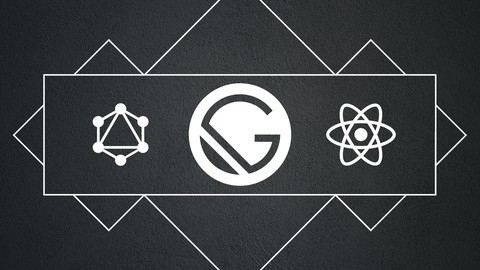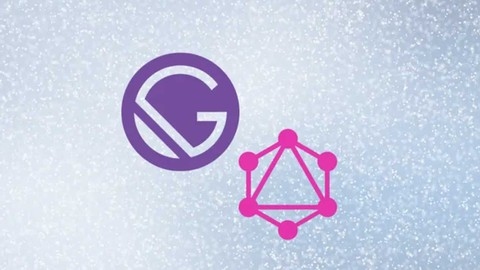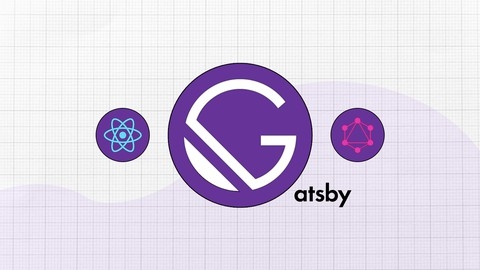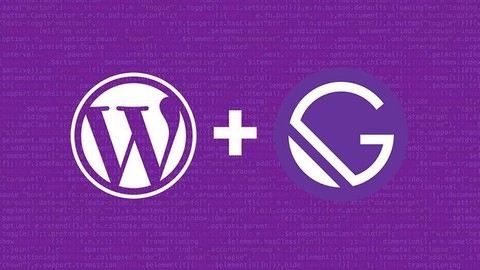Gatsby is a popular static site generator built on React, offering developers a powerful tool for creating fast and SEO-friendly websites.
It excels at building performant blogs, portfolio sites, and even complex web applications.
Learning Gatsby unlocks the ability to create stunning, dynamic websites without the complexity of server-side rendering, allowing you to focus on building a great user experience.
Choosing the right Gatsby course on Udemy can feel overwhelming, with so many options available.
You’re looking for a program that’s comprehensive, engaging, and taught by experts, but also aligns with your learning style and goals.
For the best Gatsby course overall on Udemy, we recommend Gatsby JS v5 & Headless WordPress (Gatsby & WordPress 2023).
This course stands out for its practical approach, guiding you through building a real-world website with Gatsby and WordPress as a headless CMS.
You’ll learn key concepts like data fetching with GraphQL, component creation, and integrating WordPress content into your Gatsby site.
This course is just the beginning.
We have a variety of other recommendations tailored to specific learning styles, including those focused on building blogs, using Prismic, or learning Gatsby from scratch.
Keep reading to explore the best Gatsby courses for your journey.
Gatsby JS v5 & Headless WordPress (Gatsby & WordPress 2023)
You’ll start by setting up a local WordPress environment and connecting it to Gatsby.
The course covers rendering WordPress content like pages, blocks, and custom post types in Gatsby.
You’ll learn to create custom Gutenberg blocks in WordPress and render them as React components in Gatsby.
This includes advanced techniques like rendering specific blocks with custom components and using Gatsby Image for optimized images.
The course dives into building key features like the main navigation menu by querying data from WordPress and rendering it in Gatsby.
You’ll also create custom post types for things like car listings, complete with search functionality, filters, and pagination.
Customization is a big focus - you’ll style the site by adding custom theme colors, fonts, and styling custom blocks.
The course utilizes tools like ChatGPT to generate content and covers implementing forms with Contact Form 7 and Flamingo for capturing submissions in WordPress.
Throughout the course, you’ll work with technologies like Gatsby Image, Gutenberg blocks, and deployment to Gatsby Cloud and Flywheel.
Gatsby JS: Build PWA Blog With GraphQL And React + WordPress
This course starts by setting up the development environment and introducing you to Gatsby, a popular static site generator based on React.
You’ll learn how to create pages, navigate between them, and build reusable components in Gatsby.
The course covers advanced concepts like global and module-based CSS styling, as well as integrating React-Bootstrap components for a polished UI.
A key focus is fetching and displaying blog posts using GraphQL and the Markdown Remark plugin.
You’ll learn to generate slugs for posts, create templates to render individual articles, and fix common issues like navigation links.
The course then dives into using WordPress as a headless CMS, pulling blog posts from WordPress into your Gatsby site.
You’ll optimize the site for SEO by adding metadata, installing React Helmet, and building a dedicated SEO component.
Deployment is covered in-depth, with guides on using Netlify and GitHub for hosting, as well as optimizing your Lighthouse audit score.
You’ll also learn how to turn your site into a PWA and set up WordPress webhooks for automatic deployments.
Gatsby JS & Prismic: Build RAPID Gatsby sites [Gatsby.js v4]
The course starts with an introduction, setting up the necessary tools like Gatsby and Prismic.
You’ll get an overview of the course content and learn how to link Gatsby with Prismic.
From there, you’ll dive into page generation and rendering data from Prismic using the GraphiQL tool and the RichText component.
This includes rendering titles, rich text fields, and setting up navigation.
The course covers working with Prismic slices, which are reusable components for building pages quickly.
You’ll learn to create and render various slices like the homepage hero, call-to-action, and price options.
The contact page and form are also covered, ensuring you can build a complete website.
Crucial aspects like search engine optimization (SEO) and handling internal links in rich text are included.
Towards the end, you’ll deploy your Gatsby site to production, including setting up automatic rebuilds whenever Prismic data changes using Gatsby Cloud.
The course even includes a bonus section with additional content.
Throughout the journey, you’ll work with key technologies like Gatsby, Prismic, JavaScript, GraphiQL, RichText, and learn about navigation, SEO, and cloud deployment.
Learn Gatsby JS and React with Projects Experience
This course covers everything you need to learn Gatsby JS and React from scratch.
You’ll start with an in-depth ReactJS bootcamp where you’ll learn React fundamentals like components, props, state, events, rendering lists, conditional rendering, and styling.
You’ll build practical projects like a book listing app and a developer portfolio to solidify your understanding.
Once you have a strong React foundation, you’ll dive into Gatsby JS.
You’ll learn how to set up a Gatsby project, create pages and components, link between pages, use layouts, and style your app with CSS Modules, Styled Components, and Sass.
The course covers important Gatsby concepts like GraphQL for querying data and plugins like gatsby-source-filesystem for working with markdown files.
The real highlight is the project-oriented approach where you’ll build a full-featured concert website called ZakySports.
You’ll create components like the navbar, footer, hero section, and email list form.
You’ll integrate with headless CMSs like Contentful to manage content.
You’ll fetch data from APIs like PredictHq to display upcoming concerts.
You’ll even build authentication, user dashboards, and programmatic navigation.
Throughout the course, you’ll learn modern web dev techniques like using react-bootstrap for styling, react-moment for date formatting, and Axios for API calls.
You’ll gain experience with tools like Postman for API testing and Git for version control.
By the end, you’ll have a production-ready website deployed to the cloud, complete with SEO optimization.
Gatsby Demystified: A complete course on how Gatsby V3 works
You’ll start by learning how to install and set up Gatsby, including deploying your Gatsby site to Firebase and Netlify.
The course covers the basic structure of Gatsby projects, like the config file, pages, components, and more.
From there, you’ll dive into building responsive layouts with React Bootstrap, incorporating key features like containers, rows, and columns.
The course provides a solid foundation in GraphQL, teaching you how to query data and integrate it into your Gatsby site.
You’ll learn to work with images, including background images, using the latest Gatsby image plugins like gatsby-plugin-image and gbimage-bridge.
This course also covers integrating Google Fonts, embedding responsive YouTube videos, and working with Markdown files in Gatsby.
You’ll learn how to set up Netlify CMS, allowing you to manage your site’s content through a user-friendly interface.
Additionally, the course guides you through building an “About” landing page, covering everything from styling with CSS to deploying to Netlify.
Throughout the course, you’ll gain hands-on experience with essential technologies like React, JavaScript, HTML, CSS, and more.
The instructor provides source code and example files to follow along, ensuring you understand each concept thoroughly.
Gatsby JS | Build a personal blog using gatsbyJS
You’ll start by learning what Gatsby is and how to set it up, including installing dependencies, configuring plugins, and setting up absolute imports.
Next, you’ll dive into the core technologies behind Gatsby - Markdown for writing content, and GraphQL for querying data.
The course covers creating Markdown files with front matter and understanding different GraphQL query types in Gatsby.
To style your blog, you’ll learn about Styled Components, global styles, themes, and adding CSS.
The layout section teaches you how to structure your site, including creating custom hooks for metadata and site config.
You’ll then build the main components like the header with a menu and hamburger icon for mobile, incorporating styling along the way.
The home page comes next, with a banner, blog post cards, and image queries.
The course also covers implementing light and dark mode using a ModeProvider, context API, and a theme switch button.
You’ll learn how to create slugs for posts and pages, build templates for them, and dynamically generate pages during the build process.
Pagination is implemented at the Node level, allowing you to navigate through your blog posts.
Finally, you’ll create a page navigation component to enhance the user experience.
Gatsby JS Developer’s Guide - Important Parts & Blog App
You’ll start by learning how to initialize a Gatsby project and create basic pages, components, and layouts.
The course covers styling techniques, including module-level styles and templates for reusable page structures.
Once you have the basics down, you’ll dive into GraphQL, which Gatsby uses for data fetching.
You’ll learn how to define custom data types, work with nested fields, and use arguments and filters to query data.
The course shows you how to fetch posts from a data source and create pages dynamically based on that data.
The curriculum also covers integrating data sources like plugins and transformers to handle different data formats like Markdown.
You’ll learn how to construct slugs for blog posts and create individual pages for each post.
The course teaches you to build features like pagination and search functionality, allowing users to navigate your content efficiently.
For better SEO, you’ll learn techniques like server-side rendering, setting titles and descriptions, and implementing open graph meta tags.
The course also covers generating an RSS feed and deploying your Gatsby site to platforms like GitHub.
Additionally, you’ll add progressive web app (PWA) features like offline support and explore advanced topics like wrapping the root element, using Gatsby’s server-side rendering API, and implementing theming.
Supplementary features like a maskable icon, sitemap, and Twitter integration are also covered.
Gatsby.js for beginners
You’ll start by setting up your development environment, installing essential tools like Node.js, npm, Git, and Visual Studio Code with the Prettier plugin for code formatting.
From there, you’ll dive into the core concepts of Gatsby, learning how it works under the hood and how to use the Gatsby CLI to create and manage new projects.
The course covers Gatsby’s building blocks, including components, props, and linking between pages.
You’ll also learn how to style your Gatsby site using global CSS and component-scoped styles.
A key focus is working with data in Gatsby.
You’ll learn how to query data using GraphQL, access file system data, and build pages with GraphQL queries.
This is crucial for creating dynamic, data-driven websites and apps with Gatsby.
The course also covers important topics like using Gatsby plugins to extend functionality, and creating layout components for consistent site structure.
Towards the end, you’ll learn how to deploy your Gatsby site using Surge, a simple hosting platform.
Throughout the course, you’ll gain hands-on experience by modifying an existing Gatsby starter site, ensuring you understand each concept thoroughly.
Build Gatsby site with React and WordPress as a headless CMS
You’ll start by setting up a WordPress site locally using FlyWheel’s Local tool and installing the necessary plugins.
Next, you’ll create a new Gatsby project with the Gatsby CLI and set up the required dependencies and plugins.
The course will walk you through building the layout component, including the header, navigation, footer, and an overlay menu.
For the index page, you’ll learn how to create a hero image, call-to-action area, display the latest blog posts, add a quote section, and an about section – all by querying data from WordPress using GraphQL.
The course covers creating page and archive (blog) templates.
You’ll structure these templates, add page queries, hero images, breadcrumbs, sidebars, and content areas.
For the archive template, you’ll also implement pagination.
When it comes to individual post pages, you’ll use the Route API to create post pages and add sidebars and content areas using page queries.
Throughout the course, you’ll work with key Gatsby concepts like the Gatsby CLI, GraphQL queries, the Route API, page queries, and more.
You’ll also learn how to integrate components like hero images, CTAs, sidebars, breadcrumbs, and pagination into your Gatsby site.
By the end, you’ll have a fully functional Gatsby site powered by WordPress as a headless CMS, complete with a link to the project’s GitHub repository.
Hands-On Web Development with React and GatsbyJS
You’ll start by getting familiar with GatsbyJS, a React-based framework for creating blazing-fast websites and apps.
After installing Gatsby and setting up your project, you’ll dive into styling with Typography and using React Helmet to manage metadata.
The course covers querying data with GraphQL, a powerful query language that integrates seamlessly with Gatsby.
You’ll learn how to fetch data in pages, use the StaticQuery API, and update SEO components with the useStaticQuery hook.
This lays the foundation for working with plugins, both source and transformer, which extend Gatsby’s functionality.
You’ll explore the vast plugin library and learn to track events and boost click rates with social cards.
A key aspect is programmatically creating pages from data sources like Markdown files.
You’ll build a post template, work with the createPage API in gatsby-node.js, and handle the onCreateNode API to update queries.
The course also guides you through working with images using GraphQL and the Gatsby Image component, even adding videos to your app.
To take your project to the next level, you’ll integrate with Contentful, a powerful content infrastructure platform.
After creating an account and connecting Gatsby, you’ll update gatsby-node.js with Contentful queries and modify your app’s queries accordingly.
Finally, you’ll learn how to deploy and host your Gatsby app on Netlify, a popular hosting service for modern web projects.
You’ll create an account, link your repository, and deploy your web app, even exploring Gatsby Preview for an enhanced development experience.
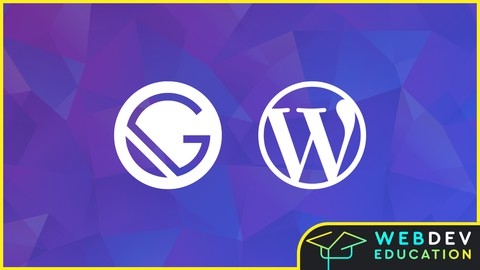

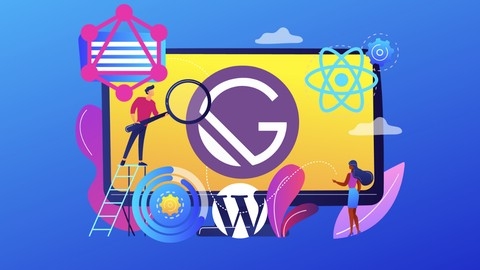
![Gatsby JS & Prismic: Build RAPID Gatsby sites [Gatsby.js v4]](/img/best-gatsby-courses-udemy/2682224_GatsbyJSPrismicBuildRAPIDGatsbysitesGatsbyjsv4.jpg)

